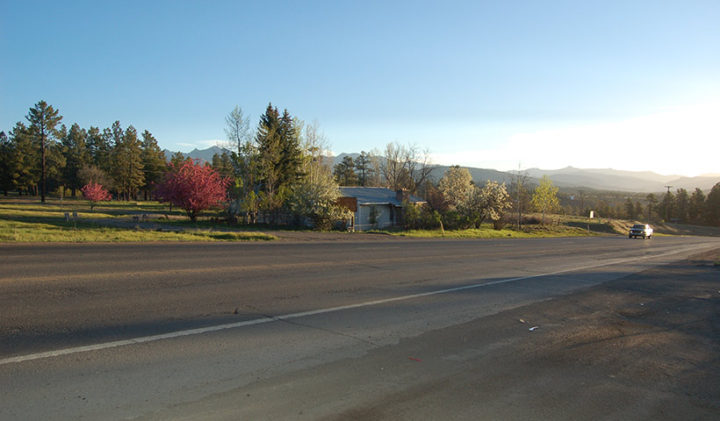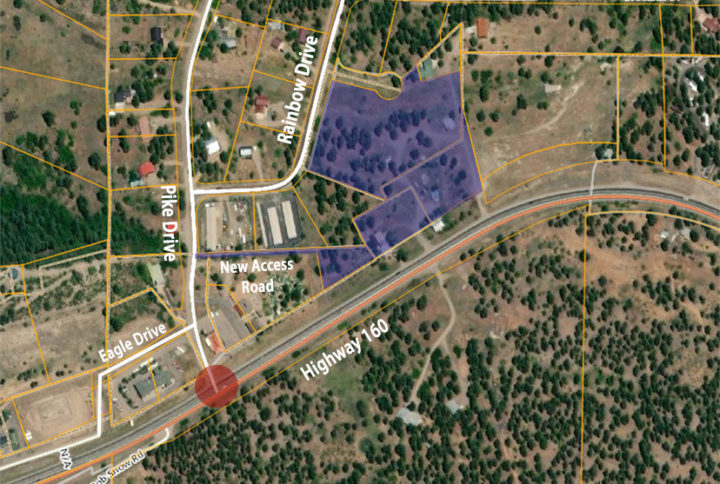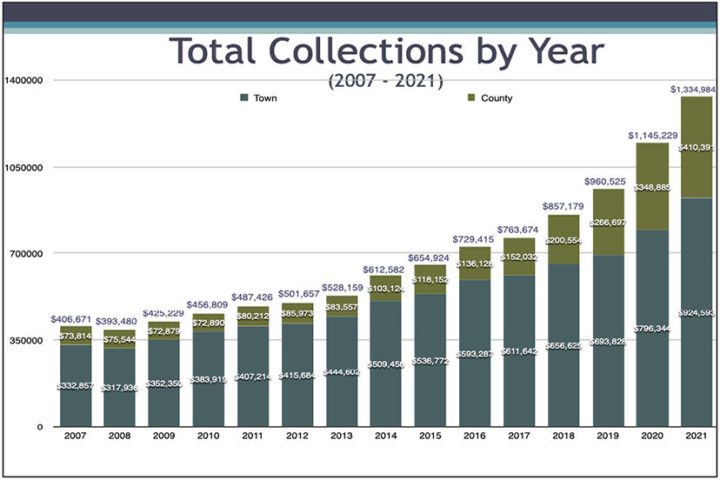Highly social creatures such as we are must abide by the rules, to remain sane and minimize unnecessary uncertainty, suffering, and strife. However, we must also transform those rules carefully, as circumstances change around us…
— from ‘Beyond Order: 12 More Rules for Life’ by Jordan Peterson.
The meeting room at Town Hall was full last night, in expectation of a Town Planning Commission discussion, and vote, concerning a proposed RV park near the top of Put Hill. (Pronounced ‘Putt Hill’)
The site is a former ‘Adult RV Park’… which ceased operation prior to 2005, according to Community Development Director James Dickhoff. Developer James Prutsman is proposing redevelopment of the site, to include maybe three permanent buildings, about 22 RV sites, and spaces for five or six mobile food vendors in an adjacent ‘Food Court’.
From the agenda notes:
The old “adult RV park” included 28 spaces, 6 of which will be converted to accommodate the food truck court area; the other 22 spaces will be reused as proposed RV sites. The site will also include a new building for central services such as check in, office, dining and other administrative functions.

The former entrance to the park, off Highway 160, would be abandoned in favor of a new entrance road, according to the plans we saw last night.
Mr. Prutsman’s main issue, at the moment, is the fact that the four subject parcels are not zoned to allow the type of tourist complex he has in mind, so he’s requesting the zoning be changed.
Change is always difficult.
Here’s the approximate area of the proposed development, shown in blue. Access to the property might be through a new access road connected to Pike Drive, also shown in blue:

The Colorado Department of Transportation (CDOT) now makes it very expensive — if not impossible — to connect directly to a state or federal highway from a property with highway frontage. So the developer is suggesting primary access to the development would be via Pike Drive or the Eagle Drive frontage road.
In the map above, we’ve indicated the existing Pike Drive-Highway 160 intersection with a red circle. This is widely recognized as one of the most dangerous intersections in Archuleta County.
Due to an error in sending out of public notices, the scheduled vote related to changing the zoning on the subject parcels, was postponed to later in the month, but Planning Commission chair Chris Pitcher allowed the public to weigh in with their thoughts about the project. ‘The public’ consisted almost entirely of residential neighbors living in the adjacent Pagosa Hills subdivision, to the north and west of the proposed RV park.
I haven’t yet listened back to my audio recording of the meeting, but as I recall, nearly everyone who testified last night mentioned the fact that the Pike Drive intersection is already dangerous, and would merely become even more dangerous with large RVs, driven by out-of-towners, trying to access Highway 160 from Pike Drive… or Pike Drive from Highway 160.
That is to say, out-of-towners unfamiliar with our most dangerous intersections.
But this editorial series was meant to focus on competent decisions that might help us solve our workforce housing crisis. So why are we discussing Mr. Prutsman’s proposed RV park?
Good question.
Yesterday in Part Five, we noted that our two local governments have been subsidizing the tourism industry — to the tune of about $10.4 million, since the voters in Pagosa Springs approved a new 4.9% Lodgers Tax in 2006.

We can understand why a business person might want to convert an old, abandoned RV park into a new, renovated RV park, given the way our tourist-driven economy has fairly exploded in Archuleta County — particularly, since the start of the COVID crisis. Developing an RV park requires very construction, compared to, say, building town homes or apartments for actual residents to live in. The development process is even simpler, no doubt, if the parcel in question used to be an RV park.
But one of the audience members last night had to ask a housing question anyway. Here’s downtown resident Julie Gurule:
“Is this going to be year ’round? Or just tourist season? I mean, could our workforce live there year ’round?”
Community Development Director Dickhoff explained that the park was proposed to be year ’round.
As our regular readers know, RVs have often become dwellings of choice for working individuals and families — and retirees as well — as the country has become increasingly mobile, and as the cost to purchase or rent a home has skyrocketed, especially in tourist communities like Pagosa Springs.

Planning Commissioner Peter Adams addressed Mr. Prutsman:
“I do have a question, and I’m not sure if it’s appropriate to ask, or if it’s appropriate for you to answer… but you must have some other considerations for this property, besides the plan that’s before us. Would you care to comment on that?”
Mr. Prutsman:
“You mean, if the planned development is not approved? Yes. It’s zoned residential, so I think basically it would be a whole series of town homes. Probably many more than 22…”
Mr. Prutsman would not need a zoning change to use the property for housing. The parcels would allow perhaps 80 town homes, given the current mixed-use zoning. Or maybe 100, with the Town’s new density bonus policy?
That use would greatly increase the traffic flow beyond what the neighbors were complaining about, as Commissioner Adams pointed out.
“Well, the thing is, I think the community should really consider that,” Commissioner Adams continued. “I understand the concern about big RVs coming in and out and stuff like that… but it’s a prime piece of ground and we already have the zoning for a large number of units there.
“Quite frankly, it’s a tough decision. I certainly hear what all the neighbors are saying… and here we are.”
The zoning decision was continued to the May 24 meeting, at 5:30pm at Town Hall.
Change is always difficult, but sometimes necessary. And sometimes, unavoidable.
Building RV parks for tourists, and converting existing residential homes into vacation rentals will not solve our housing crisis. Such changes will likely make the problem even worse.
What if the Town and County government agreed to direct $10.4 million into solving the housing crisis, over the next decade, instead of funneling that money into tourism promotion?
I could live with that decision.
